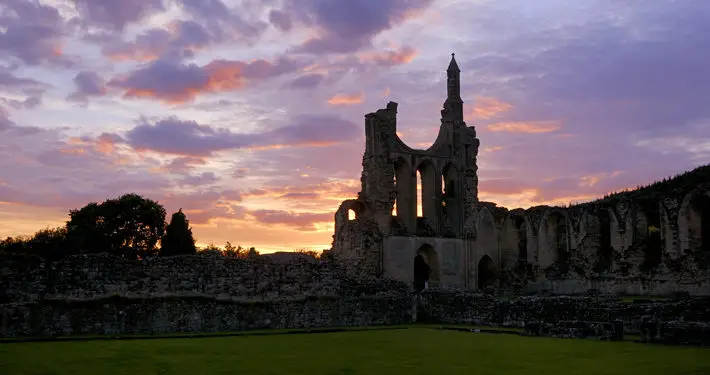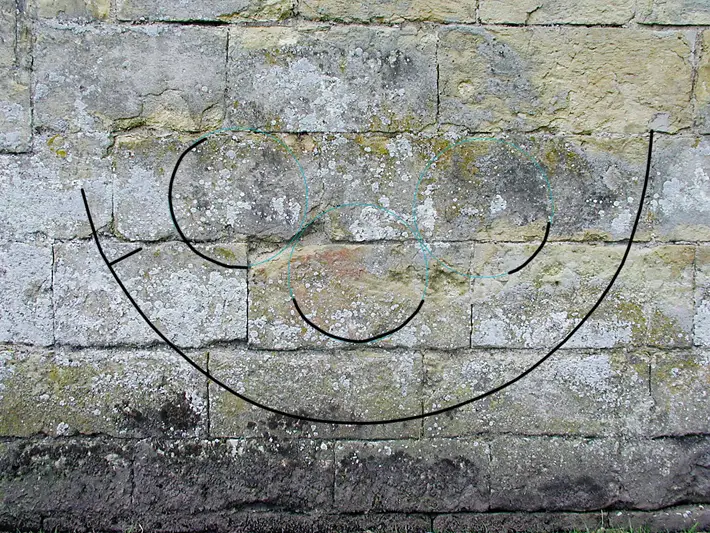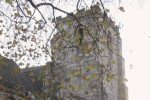The Daisy Wheel of Byland Abbey

At the beautiful Cistercian ruins of Byland Abbey there remains a faint and intriguing design traced on the inside wall of the great church by the masons who worked on the building during the 13th century. Dr Mark Douglas, Properties Curator at English Heritage which looks after Byland Abbey explains more about this fascinating find.
Designs of this type, which are made up of a number of intersecting circles drawn with the aid of a compass, are commonly referred to as Daisy Wheels due to their obvious resemblance to that particular flower. Daisy Wheels are a quite common occurrence and are found in buildings all over the country. One idea is that they result from the activities of Master masons teaching their apprentices the method by which geometric patterns are used to design the patterns for tracery windows and carved detail. Others suggest that they represent a sort of emblem; a charm to ward off bad luck or the Evil Eye. However, in most instances these tracings are small in size somewhere between 10 -100cm; in fact there is a small version at Byland close to the cloister.
The tracing in the church at the abbey on the other hand is rather larger than this at 1.52m across and indeed is somewhat different in its execution. Although relying on the same method of marking out; a circle of a pre-defined diameter it, does not have the usual Daisy Wheel pattern or petal shape. It is made up of a large circle with six smaller circles set within it. Its composition suggests something more than the usual ritual explanation for its appearance and experts agree, that it is rather a full scale drawing of the central element of the great Rose Window, which once filled the upper section of the west end of the church.

Daisy wheel with overlay of projected lines
“Remarkable survival”
It seems that the open section of walling was used to trace out the intended shape of the central wheel of tracery which made up the middle of the window and the masons used this; possibly to make templates for the stone carvers and to check the shape of the individual stone before they were hauled up for assembly. Whatever the reason, the tracing is a remarkable survival. It was preserved beneath the wall plaster which covered the full interior of the church when completed and remained there unobserved until the closure of the church in the 16th century.
Following the removal of the lead from roof debris, including the wall plaster, accumulated at the base of the walls and the abbey was given over to nature with trees and ivy covering the ruins. This actually helped to preserve the lower section of the tracing, which was uncovered when the site was cleared in the 1920s. Since this time the actions of the elements have once again taken their toll on the tracing and it has now become so faint as to be almost invisible.
The remaining lines have been recorded by English Heritage using sophisticated photographic techniques so there is a full visual record of the design for future study. It can however be seen under certain conditions. Visit the site in the morning when the light is coming from the south and if you look closely you will still see some faint lines revealed. As this comes into view think about the men who built this remarkable building and how their vision was manifest in solid stone with the help of some basic geometry and a compass.
Byland Abbey is open 10am – 5pm daily
english-heritage.org.uk/visit/places/byland-abbey









